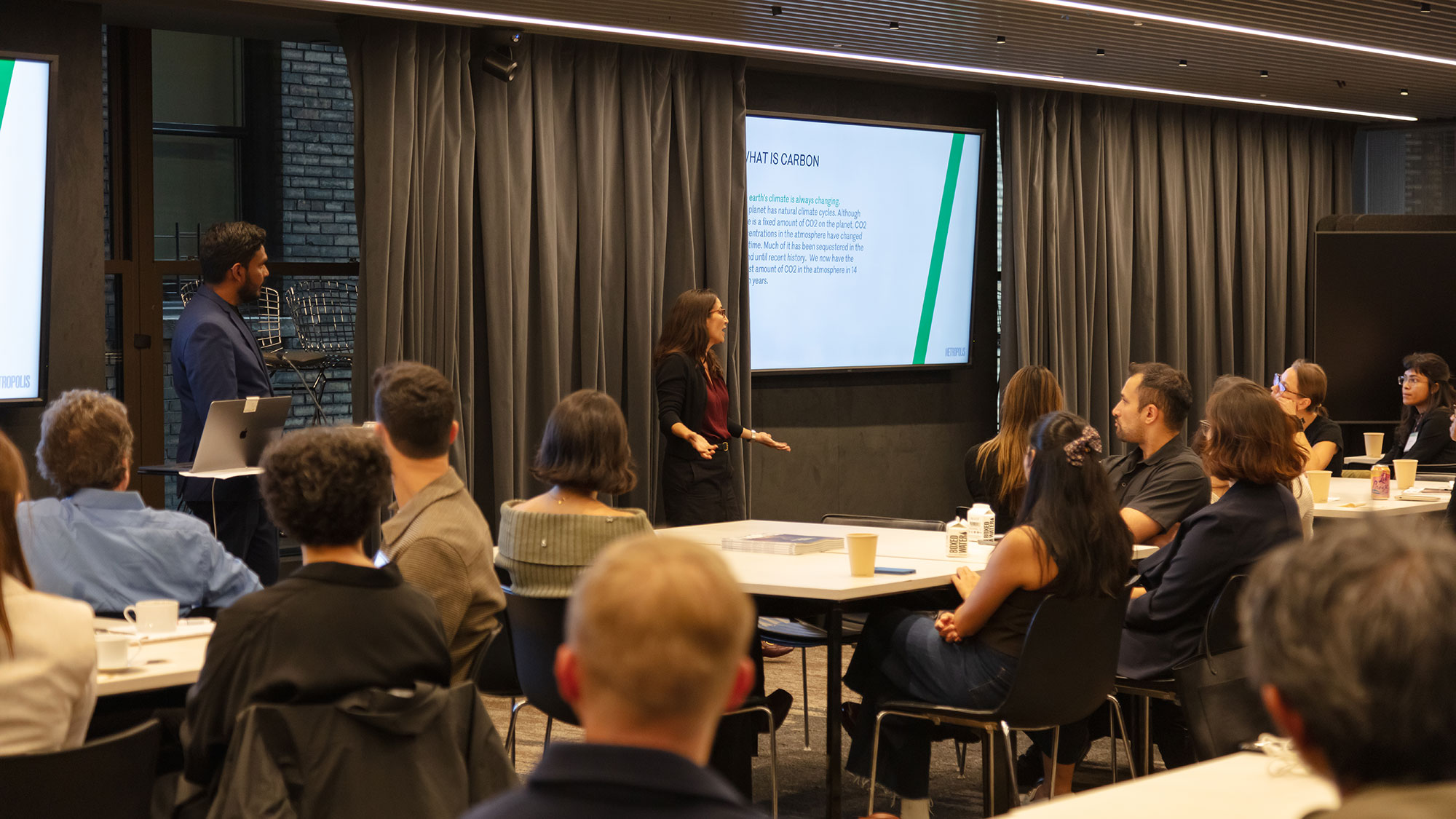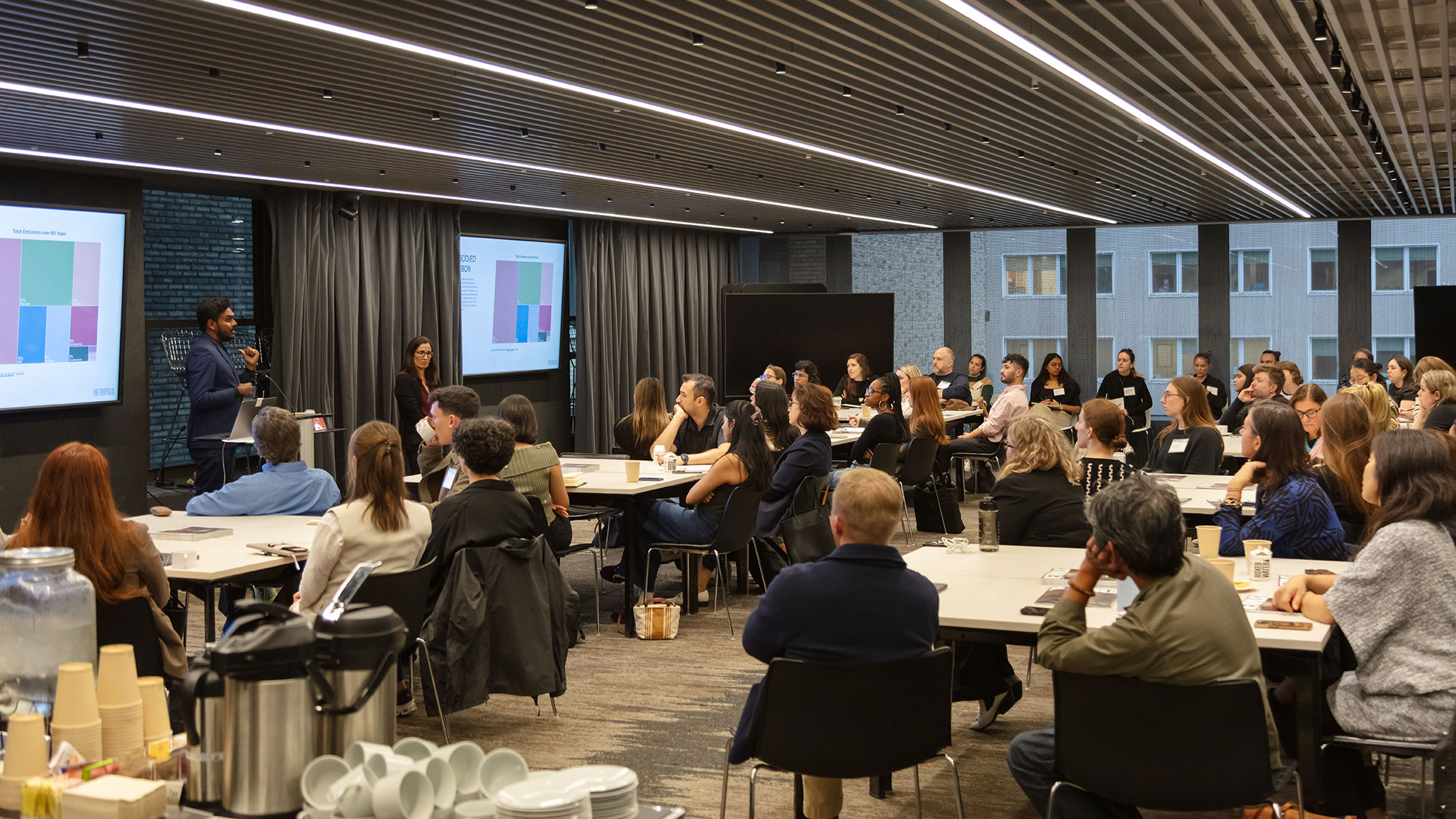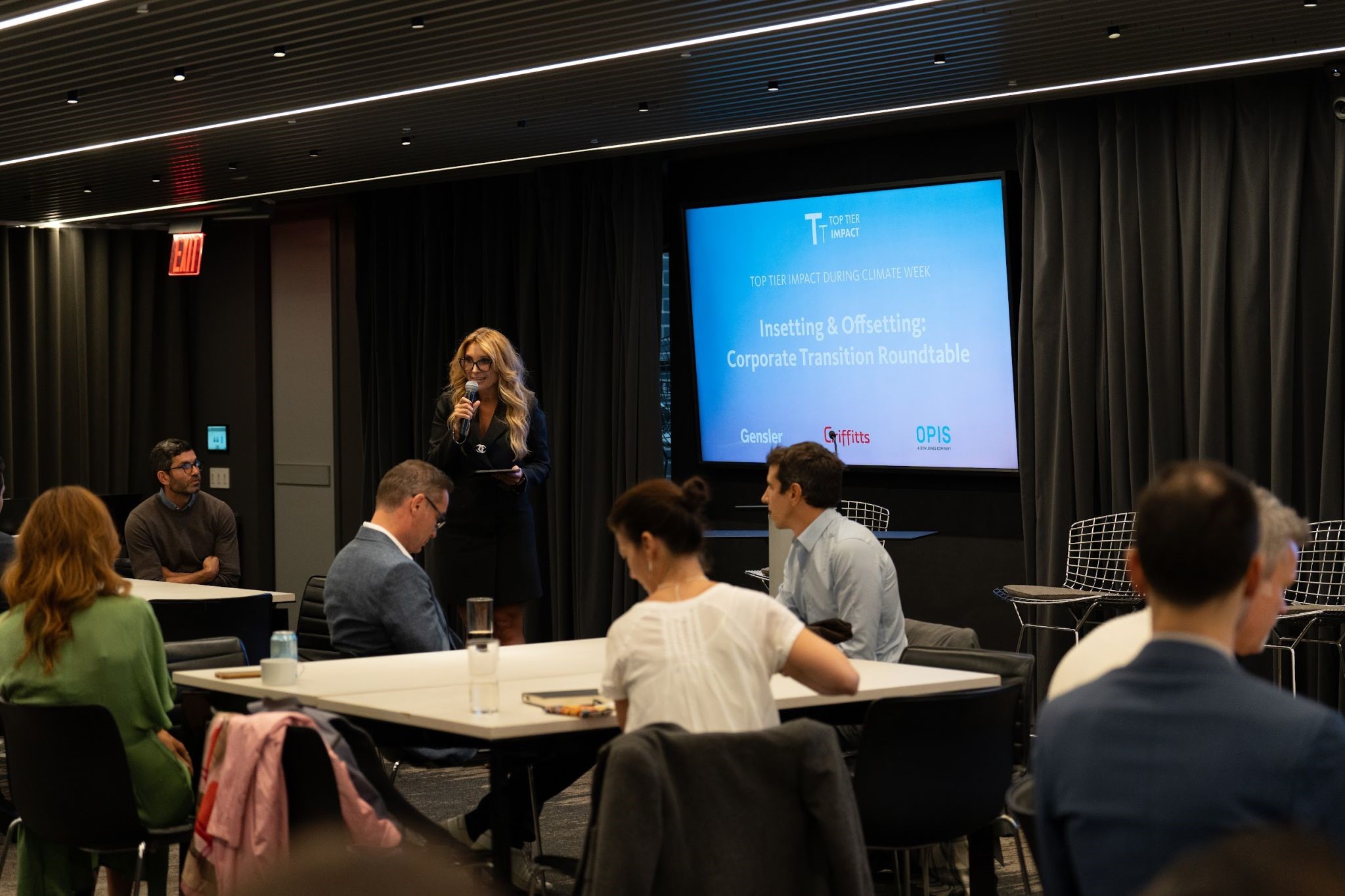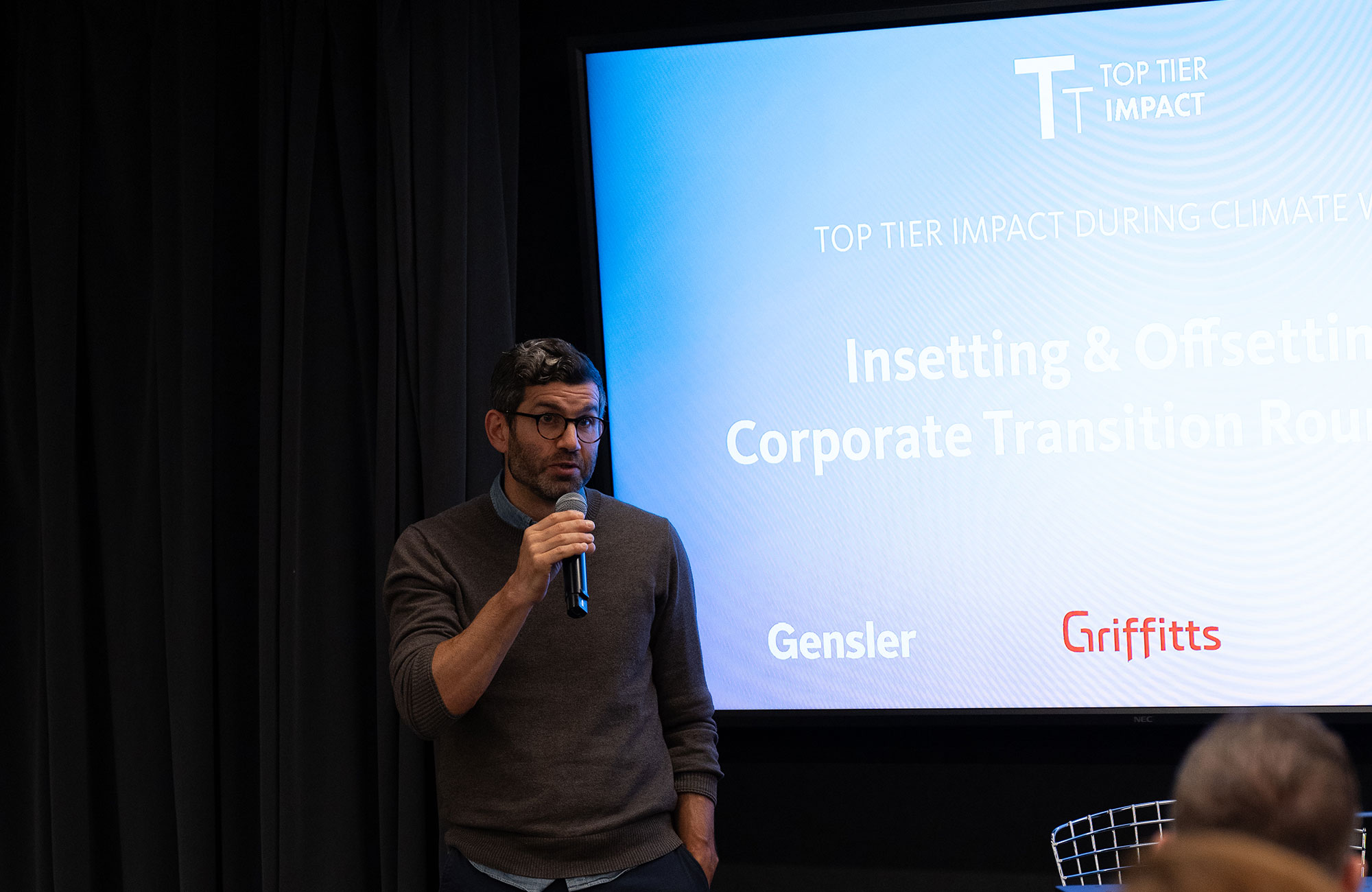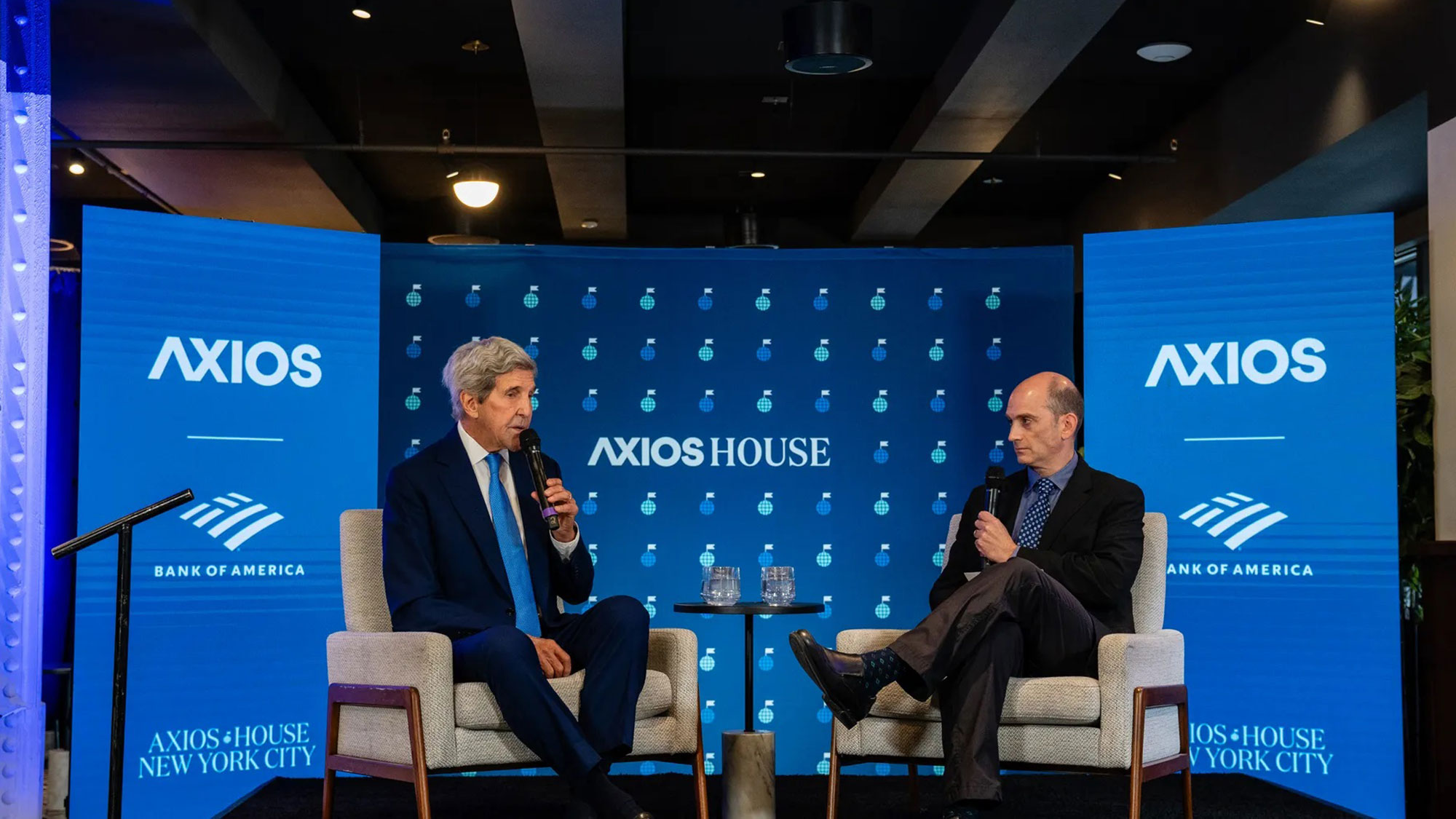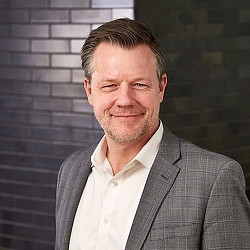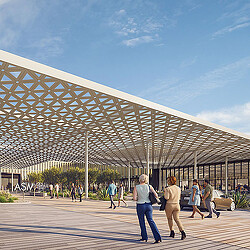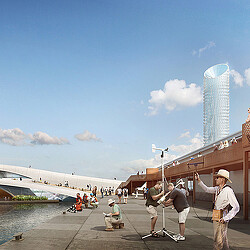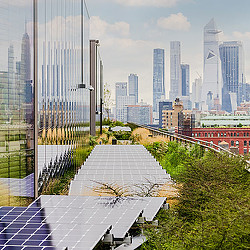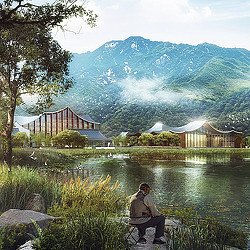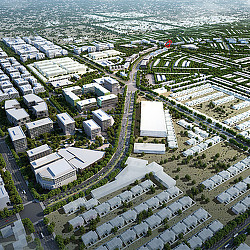Emerging Trends in Climate Action From Climate Week NYC
Signals that the climate dialogue is evolving to meet the urgent need for impact at scale.

To avoid the worst impacts of climate change and keep global warming to no more than 1.5°C by 2030, as called for in the Paris Agreement, we must reduce emissions by 45% in the next six years, according to the United Nations. While many large organizations have made 2025 and 2030 carbon reduction commitments, these fast-approaching deadlines underscore the urgency for climate action. The built environment plays an important role in reaching these targets, especially in New York City, where roughly 70% of greenhouse gas emissions come from buildings.
Climate Week NYC, now in its 15th year, included over 600 events, seminars, workshops, and talks with more than 6,500 leaders from the world of business, tech, politics, academia, and civil society from more than 100 countries. The conference’s theme, ‘It’s Time,’ is a reflection of the urgent need for impact at scale.
Below are four trending topics that emerged during Climate Week NYC, highlighting how conversations surrounding climate action are evolving to meet this moment:
1. Global environmental regulations are evolving, and architects can be advocates to help U.S. policy makers catch up by improving public-private progress through better-informed policies and incentives.
In Europe, governments and the private sector have been more proactive in the past few decades in addressing operational carbon, through initiatives such as the Energy Performance of Buildings Directive, established in 2010. This directive has recently been revised to introduce energy efficient minimums that better reflect the urgency of the climate crisis and to introduce financial mechanisms to incentivize banks to provide loans for energy efficient renovations. Some countries are going farther, implementing regulations that are focused on measuring the carbon lifecycle.
David Briefel: Europe is leading the way on carbon legislation. Denmark, the U.K., and France have successfully implemented regulation for whole life carbon targets and thresholds, while others like Finland and Sweden are currently rolling theirs out. Other countries, like Germany, Belgium, and the Netherlands, have developed standards and methodologies for completing life cycle analysis, while cities like Helsinki and Utrecht have led with unique whole lifecycle carbon legislation. Separately, organizations like the UK Green Building Council (UKGBC) are launching standards for net zero carbon buildings to establish standards and a definition. The challenge is to align these definitions across Europe so that a common understanding of targets and thresholds can universally achieved. Incentives to comply with these regulations will be equally important, particularly in the U.S., where labor requires training, and developers need alternatives to tax incentives and penalties to speed up adoption.
Joe Lauro: By and large, public and private organizations [in the U.S.] are committing to meet the challenges of climate change head-on, but there is a lot of frustration that policies are too watered down and too reluctant to disrupt business-as-usual operations to provoke real change. We see this in New York City, for example, where the city’s signature climate regulation targeting reductions in operational carbon for large buildings, Local Law 97, doesn’t apply to a huge swath of buildings like healthcare facilities, city-owned buildings, and multifamily homes under three stories. Additionally, the zoning regulations limiting density and promoting low-density development across the U.S. celebrate sprawl and hold back sustainable development.
Mallory Taub: One new challenge and opportunity in our industry is closing the gap between the design process and the new federal incentives available through the Inflation Reduction Act, the federal government’s largest-ever investment in climate action. Tax credits are a large portion of the currently available incentives from this legislation for low-carbon buildings. Designers are not typically engaging tax advisors during the design phase to estimate potential savings from low-carbon design strategies that clients could achieve. This results in some strategies being removed from consideration due to perceived cost.
Aside from incentives, we heard directly from government agencies at all scales of government who are working on standards to continue to raise the bar for building performance. These agency representatives spoke passionately about the importance of collaborating with practitioners to develop feasible and implementable codes and standards that pull the design industry forward.
2. The industry faces significant challenges in standardizing carbon accounting to create a common language and scale impact.
The industry grapples with significant challenges in standardizing carbon accounting methods, which can lead to inconsistencies that hinder progress toward emissions reduction goals. By improving data collection, we can enhance transparency and inform targeted action. Accuracy and consistency will allow building owners and occupants to scale impact.
Mallory Taub: There is a proliferation of different standards to measure carbon, a lack of baselines, and consensus that measurement is critical to inform strategic action. However, aligning standards, data collection methodologies, and baselines will take time. While this is under development, we need to take action now with prescriptive strategies that we know intuitively will make a difference.
Oliver Schaper: The World Business Council for Sustainable Development held a Climate Week event focused on the theme of “Accelerating Zero Carbon” and discussed the need for a more integrated approach to carbon accounting, as well as the importance of engaging with tenants and other stakeholders in the development of zero-carbon projects. One interesting proposal called for carbon accounting practices to put the burden on end-users of space. The idea is that the market will shift when “carbon guzzlers” become more expensive to occupy than carbon neutral spaces.
Michael Flynn: Although the architecture and design industry has focused on carbon emissions for years in terms of operational and embodied carbon for structural materials, new methodologies and tools developed across the industry are finally helping to measure and benchmark the environmental impact of interior materials, finishes, and furniture.
3. Circularity is the future of the design industry.
This shift towards circular design emphasizes the importance of using products and systems that prioritize recyclability, closed-loop supply chains, and regenerative materials. Once only a theoretical economic model, leaders across the design and construction industry are finding levers to put theory into practice.
Joe Lauro: One of the dominant themes at Climate Week NYC was a growing emphasis on circularity in the design industry to reduce embodied carbon. This approach advocates for using materials in a “cradle-to-cradle” manner, ensuring that materials never have a single-use life. This perspective was echoed in nearly every conversation, and it’s crucial for reducing the built environment’s contribution to climate change.
Mallory Taub: It is heartening to see that embodied carbon — the total amount of greenhouse gas emissions released during the life cycle of a material — is no longer a fringe topic. Awareness about the importance and opportunity of embodied carbon reduction was prevalent in many conversations by many stakeholders within and outside of the design industry.
Michael Flynn: Practitioners are starting to understand the power they wield over the built environment and have begun to take responsibility for their roles by using the resources developed to measure and cope with a product or material’s embodied carbon, while also considering the overall lifecycle of those products.
4. The housing crisis and climate crisis are intertwined, and both are dependent upon a holistic approach to building regenerative cities.
As urban populations grow and the need for affordable housing increases rapidly, we must adopt a holistic approach that prioritizes the creation of regenerative cities — spaces that promote ecological health, social equity, and economic resilience.
Joe Lauro: Surprisingly, the global housing crisis was another recurring topic. A presenter highlighted the need to construct 92,000 housing units per day to meet the expected global growth over the next 25 years. This is a rate that most jurisdictions and nations are struggling to meet. Furthermore, climate change will adversely affect existing communities, leading to migration and exacerbating the overall housing need.
Mallory Taub: Many of the conversations focused on climate change mitigation and not yet actionable approaches to climate adaptation or regeneration. To address the urgency of the intersectional challenge of housing and climate change, we need to pick up the pace of retrofitting existing buildings. Whether that is through office-to-residential conversions, electrification, or energy efficiency upgrades, retrofitting homes is a challenging process that involves engaging residents, navigating funding sources, and managing complex construction logistics.
David Briefel: Building regenerative cities requires recognizing the full ecosystem of stakeholders — and coming up with new and accelerated ways of cooperation across stakeholders. That means new types of partnerships, faster prototyping solutions, and freeing up more capital investment. Ultimately, we need a combination of regulation and incentives that support long-term investment. We have proven strategies and technologies that we know will deliver ROI — some that will pay off in the shorter term, and some that returns won’t be seen on for up to 20 years — but their adoption is hindered by a short-term focus that undervalues future benefits. There is currently a lot of energy being targeted at solving the climate and housing crises from product manufacturers, legislators, and architects, but more collaboration is key to ensuring these efforts are unified and can move forward equitably.
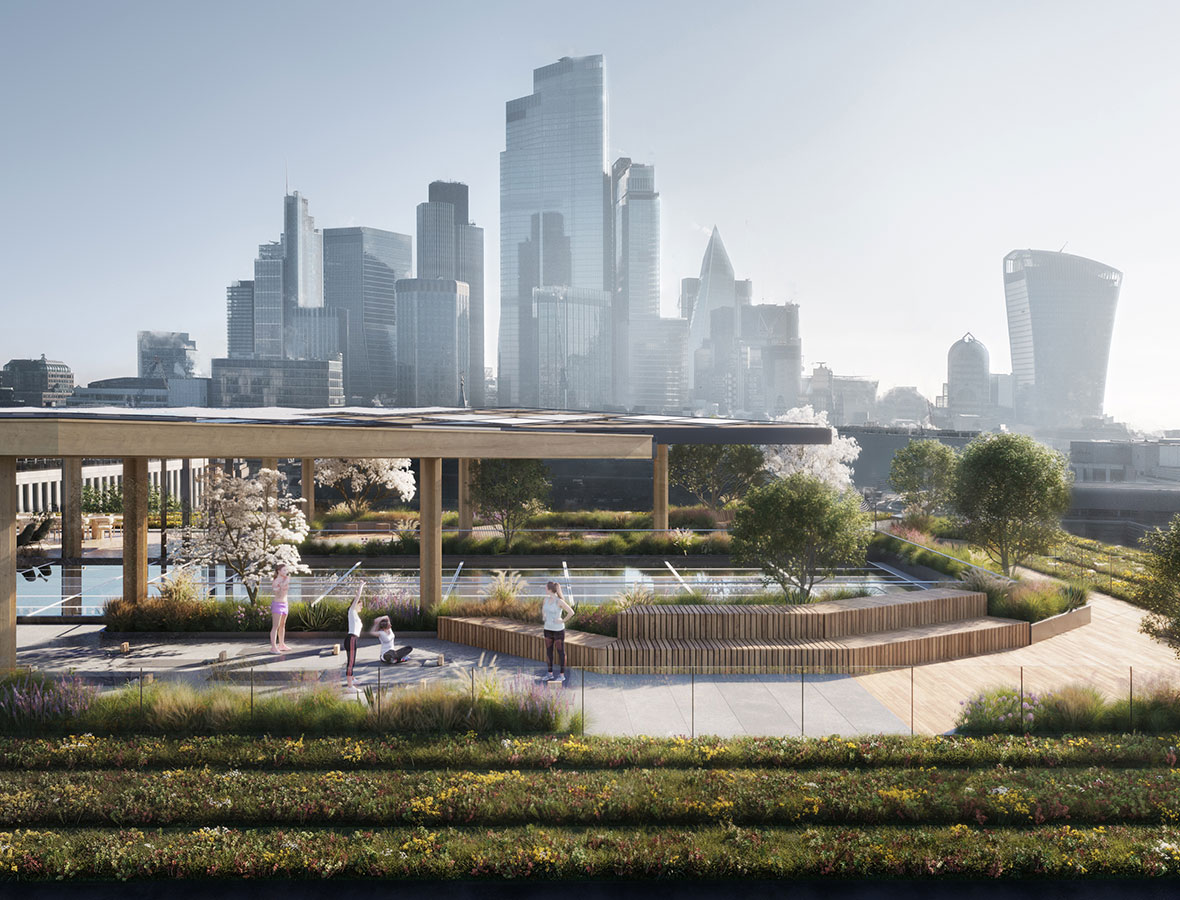
For media inquiries, email .
